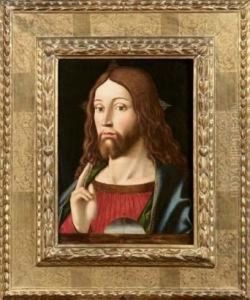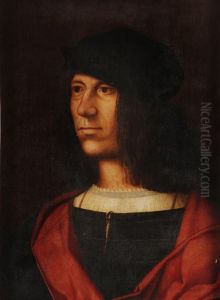Filippo Mazzola Dell Erbette Paintings
Filippo Mazzola, also known as Filippo Mazzola Dell Erbette, was an Italian Renaissance painter active during the late 15th and early 16th centuries. Born in 1460 in Parma, Italy, he was part of a family of artists and is often overshadowed by his more famous son, Girolamo Francesco Maria Mazzola, better known as Parmigianino. Despite this, Filippo made significant contributions to the art of his time and region.
Filippo Mazzola's work is characterized by the influences of the Ferrara and Bologna schools of painting, and he is known for his religious works, portraits, and frescoes. His style reflects the transition from the late Gothic to the early Renaissance. Unfortunately, much of his work has been lost or remains unidentified, which makes a comprehensive assessment of his oeuvre difficult.
Mazzola's surviving works suggest he was adept at capturing the human figure and employing a delicate use of color. His religious paintings are noted for their devotional quality and attention to detail. One of his most significant works is the altarpiece for the church of San Giovanni Evangelista in Parma, which displays his capacity for composition and understanding of the human form.
Filippo Mazzola's influence extended to his son, Parmigianino, who became one of the leading figures of the Mannerist movement. Filippo died in 1505 in Parma, leaving behind a legacy that would be carried on and amplified by his son's extraordinary talents. His contribution to the Parma school of painting is significant, and his works are an important part of the cultural heritage of the region.

